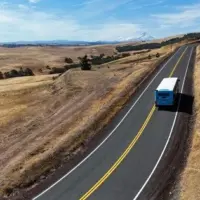
The Oregon Department of Transportation is experiencing a funding crisis driven by flattening and declining gas tax revenues, inflation and restrictions on available funding. This crisis could result in the largest layoff in Oregon state government history. Only new funding or having the flexibility to use existing funding in new ways can prevent layoffs and service reductions for travelers, freight haulers, and people waiting in line at DMV. The cuts, scheduled to begin on September 16, will make Oregon’s transportation system less safe and less reliable.
ODOT is in the process of laying off 483 employees and eliminating another 449 vacant positions. The agency also plans to shutter maintenance facilities around the state and is looking at deep cuts across the board if either new funding or more funding flexibility is not granted to the agency.
So how did this happen and what has ODOT done already to address its funding crisis?
ODOT cannot move funds from projects to maintenance
The funding ODOT uses to pay for construction projects comes from two primary sources that are required by law to go to projects:
- Federal highway funding. Under federal law this type of funding, with a few exceptions, can only be used for infrastructure improvement projects.
- State highway funds dedicated by the Oregon Legislature to projects generally or specific projects. The Oregon Legislature directs a large portion of ODOT funding to construction projects. This includes the debt service for billions of dollars of bonds directed by the legislature to fund projects in previous transportation packages. ORS 367.095 directs ODOT to spend virtually all of the additional funding provided under HB 2017, the last major transportation package passed in 2017, on construction projects. Only 6% of ODOT’s HB 2017 funding is available for operations and maintenance.
Because this money is specifically dedicated to construction projects by either state or federal law, it is unavailable to offset the State Highway Fund shortfall currently impacting agency operations and maintenance.
ODOT has cut spending already and continues to tighten its belt
With rising costs, flattening to declining gas tax revenues, and restrictions on spending, ODOT knew this fiscal cliff was looming. Over the past five years, ODOT has made significant cuts: increasing efficiency, shrinking operations, consolidating facilities and deferring maintenance.
These voluntary efforts saved nearly $300 million over that time. The agency is operating on an austerity budget that severely curtails spending on equipment and materials, training, travel, hiring, and other spending across the agency.
Cutting maintenance work will likely cost more in the long run
Delaying maintenance may reduce spending in the short term, but it will lead to higher costs down the road. Routine work like repairing pavement, clearing drains and culverts and maintaining signs and guardrails prevents small issues from becoming major ones. When this work is reduced or deferred, roads and bridges deteriorate faster, leading to more frequent closures, more expensive fixes and greater risks for travelers.
Investing in regular maintenance is one of the most cost-effective ways to protect Oregon’s transportation system and the people who rely on it every day. These short-term reductions dramatically impact ODOT’s ability to respond to incidents and will almost certainly cost taxpayers more in the long run.
How the current proposal compares to previous funding packages
Governor Kotek released a funding proposal on Thursday, August 7, that is designed to raise about $620 million for the State Highway Fund in the 2025-2027 budget cycle. This funding would be split between ODOT (50%), counties (30%), and cities (20%). ODOT’s share of just over $300 million is enough to stop layoffs, fill some vacant positions, and restore many service levels.
This proposal raises less revenue than the last transportation package (HB 2017 in 2017) and reflects the intent to provide only the funding necessary to address this immediate funding crisis and prevent layoffs. The registration and gas tax increases would cost the average driver about $66 per year in gas tax and registration fees, or $5.50 per month.
Vehicle and fuels tax revenue raised at the state level is shared with cities and counties
The structural revenue issue impacting ODOT is not limited to state highways. County and city transportation departments are also struggling to pay for the roads their communities rely on.
In recent years, half of State Highway Funds raised at the state level have gone to ODOT, 30% to counties, and 20% to cities. If this proposal passes, in FY 2027, local governments will get a total of almost $200 million in additional funding. That’s about a 30% increase from current funding levels.
Learn more
Want to learn more about ODOT’s funding crisis? The agency has put together a funding page with frequently asked questions and a video on why transportation agencies are making difficult cuts. ODOT will continue to provide information on the agency’s funding crisis through bulletins like these in the coming days.














